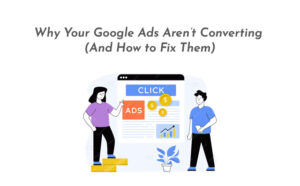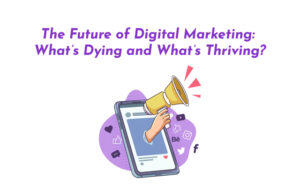Content marketing is a powerful tool for businesses seeking to build their brand, engage their audience, and drive growth. By creating valuable and relevant content, businesses can connect with their target audience, establish authority in their niche, and ultimately, achieve their marketing goals. In this article, we’ll explore a comprehensive guide on various ideas and strategies for content marketing that can be applied to any business. Whether you’re a small startup or a well-established corporation, these content marketing ideas can help you stand out in the digital landscape and drive results.
Understanding Content Marketing
In the digital age, content marketing has become a cornerstone of business success. It involves creating and distributing valuable, relevant content to attract and engage a specific target audience. This audience-centric approach, rather than traditional product-centric advertising, focuses on building trust and providing solutions to the audience’s problems.
You would like to read: Easy Guide For Your Weekly Content Calendar (With One Week Plan)
The Importance of Content in the Digital Age
With the vast amount of information available online, consumers are empowered to research and make informed decisions. As a result, businesses that offer high-quality, informative content have a competitive edge. In the digital landscape, content is king.
Defining Your Content Marketing Goals
Before diving into content creation, it’s crucial to set clear objectives. These goals should align with your business’s broader marketing and growth strategies. Whether you aim to increase brand awareness, drive website traffic, generate leads, or boost sales, having defined goals will guide your content marketing efforts.
Setting Clear Objectives
Start by defining specific, measurable, achievable, relevant, and time-bound (SMART) goals. For example, you might set a goal to increase website traffic by 20% in the next six months. These goals serve as benchmarks for your content marketing success.
Aligning Content with Business Goals
Content marketing should seamlessly integrate with your business objectives. Every piece of content you create should contribute to achieving those goals. If you’re not sure how a specific piece of content aligns with your objectives, it’s worth reconsidering whether it’s worth creating.
Knowing Your Target Audience
Understanding your target audience is fundamental to effective content marketing. Without a clear understanding of your audience’s demographics, interests, and pain points, your content may miss the mark.
Creating Detailed Buyer Personas
Buyer personas are fictional, detailed representations of your ideal customers. They include information like age, gender, occupation, income, interests, and challenges. By creating these personas, you gain insights into your audience’s needs and preferences.
Researching Audience Preferences and Pain Points
To create content that resonates, conduct research to understand your audience’s preferences and pain points. This research may involve surveys, social listening, or studying your competitors’ content to identify gaps you can fill.
Blogging and Article Marketing
Blogging is a foundational content marketing strategy. It provides a platform to share your expertise, educate your audience, and build authority in your niche.
The Power of Blogging
Blogs are versatile. They can be used for sharing industry insights, how-to guides, thought leadership, and more. Blogs allow you to provide in-depth information to your audience.
Effective Article Marketing Strategies
To ensure the success of your blog, implement effective article marketing strategies. This includes optimizing your blog posts for search engines, using relevant keywords, and creating high-quality, shareable content.
SEO Optimization for Blogs
Search engine optimization (SEO) is critical for blog posts to rank well in search engine results. This involves keyword research, optimizing meta titles and descriptions, and structuring content for readability and SEO.
You would like to read: Connecting Social Media And SEO: A Digital Marketing Game-Changer!
Visual Content: Leveraging Images and Infographics
Visual content, such as images and infographics, can enhance your content marketing efforts and make your message more engaging and memorable.
Visual Appeal in Content
Humans are naturally drawn to visuals. Integrating images, infographics, and charts into your content can help you convey complex information in a more digestible format.
Crafting Engaging Infographics
Infographics are a visual way to present data, statistics, and concepts. They are highly shareable on social media and can help simplify complex ideas.
Image SEO and Optimization
Optimizing your images for search engines is as important as optimizing your text content. Proper image compression, alt text, and file names can improve your SEO and page load times.
Video Marketing
Video marketing is one of the most influential forms of content in the digital era. Businesses of all sizes can benefit from incorporating video into their content marketing strategy.
The Rise of Video Content
Video content captures and retains viewer attention more effectively than text-based content. The popularity of video platforms like YouTube and TikTok further underlines the importance of video marketing.
You would like to read: 4 Steps To Build An Effective Content Marketing Strategy
Types of Video Content
There are various types of video content you can explore, including product demos, tutorials, interviews, webinars, vlogs, and storytelling videos. The choice depends on your goals and audience.
Video SEO and Distribution
To ensure your videos are discovered by your target audience, it’s essential to optimize them for search engines and distribute them across various platforms, including your website, YouTube, and social media.
Podcasting for Audience Engagement
Podcasting is a dynamic way to engage your audience through audio content. It’s a format that’s rapidly gaining popularity among businesses.
The Podcasting Trend
Podcasts offer a convenient way for people to consume content while multitasking. They can be enjoyed during commutes, workouts, or other daily activities.
Creating and Promoting Podcasts
Creating podcasts involves planning and recording episodes, as well as distributing them on podcast directories and your website. Promoting your podcast through social media and email marketing can expand your reach.
Building a Podcast Audience
Engaging your listeners and growing your audience is a long-term effort. Consistency, providing valuable content, and engaging with your audience through social media can help build a dedicated following.
Social Media Content Strategies
Social media platforms provide a valuable channel for content distribution and audience engagement.
Utilizing Various Social Platforms
Different social platforms cater to different audiences. Depending on your business and target demographic, you may choose to focus on platforms like Facebook, Instagram, Twitter, LinkedIn, or emerging networks.
Engaging with Your Social Audience
Engagement on social media involves responding to comments, interacting with your followers, and participating in discussions. Building relationships on these platforms is essential.
Social Media Advertising
Paid social media advertising can amplify your reach and target specific audience segments. Platforms like Facebook Ads and Instagram Ads offer robust targeting options.
Email Marketing Campaigns
Email marketing remains an effective method for reaching your audience and nurturing leads.
Building and Nurturing Your Email List
Building a high-quality email list requires collecting contact information from people interested in your business. Utilize opt-in forms on your website and offer incentives to encourage sign-ups.
Crafting Effective Email Content
Well-crafted emails should be personalized, informative, and relevant. Tailor your content to your audience segments and provide value in each message.
Measuring Email Marketing ROI
To assess the success of your email marketing campaigns, track key metrics like open rates, click-through rates, conversion rates, and the overall return on investment (ROI).
Interactive Content for Engagement
Interactive content provides an opportunity for audience engagement and can include elements like quizzes, polls, surveys, calculators, and interactive storytelling.
The Power of Interactivity
Interactive content encourages active participation from your audience, making it more engaging and memorable.
Creating Quizzes, Polls, and Surveys
Creating and sharing quizzes, polls, and surveys can help you gather valuable insights about your audience while providing a fun and interactive experience.
Interactive Content Analytics
Analyzing the performance of your interactive content, such as completion rates and user responses, can inform your content strategy and future campaigns.
Guest Blogging and Collaborations
Collaborative content efforts, such as guest blogging and partnering with influencers, can extend your reach and establish credibility.
Expanding Your Reach with Guest Blogging
Guest blogging involves writing content for other blogs or websites in your niche. It helps you tap into a new audience and build backlinks.
Partnering with Influencers and Industry Experts
Collaborating with influencers and industry experts can provide you with access to their existing audience, establish your authority, and foster trust within the community.
Dos and Don’ts of Collaborative Content
Successful collaborations require clear communication, mutual benefits, and respect for each party’s contributions. Be selective in choosing the right partners for your brand.
Case Studies and Success Stories
Case studies and success stories offer evidence of your ability to solve real-world problems and deliver results.
Demonstrating Real-World Success
Showcasing how your products or services solved a specific challenge for a client or customer helps build trust and credibility.
How to Create Compelling Case Studies
A well-structured case study includes a clear problem statement, a solution, and measurable results. Use client testimonials, data, and visuals to tell the story.
Promoting Your Case Studies
Promote your case studies through various channels, such as your website, blog, email marketing, and social media. They can also serve as valuable sales collateral.
Evergreen Content for Long-Term Impact
Evergreen content remains relevant and valuable to your audience over an extended period.
Understanding Evergreen Content
Evergreen content doesn’t focus on current trends or news but on timeless topics and solutions that will remain useful to your audience.
Strategies for Evergreen Content Creation
To create evergreen content, focus on topics that are perennially relevant in your industry. Perform keyword research to identify high-traffic, evergreen keywords.
Updating and Refreshing Evergreen Content
Even evergreen content needs occasional updates to maintain its relevance. Regularly review and refresh your evergreen articles with new information and insights.
Monitoring and Analytics
Data is the lifeblood of a successful content marketing strategy. Analyzing your content’s performance provides invaluable insights.
The Importance of Data
Data-driven decisions are key to refining your content marketing strategy. Without analytics, you won’t know which efforts are paying off and which need adjustment.
Key Metrics for Evaluating Content Performance
Metrics like website traffic, conversion rates, bounce rates, time on page, and click-through rates provide valuable information on how your content is performing.
Using Analytics to Refine Your Strategy
Regularly analyze your content performance and use the insights gained to make informed decisions about your future content marketing efforts.
Staying Current with Trends and Updates
The digital landscape is constantly evolving. Staying on top of emerging trends and platform updates is crucial for maintaining a competitive edge.
Adapting to Changing Algorithms and Platforms
Search engine algorithms, social media platforms, and digital advertising channels are continually evolving. Stay informed and adapt your strategies accordingly.
Staying Ahead of Industry Trends
Understanding industry trends helps you create content that is fresh, relevant, and aligned with your audience’s interests and concerns.
The Role of Emerging Technologies
Keep an eye on the potential of emerging technologies such as augmented reality (AR), virtual reality (VR), and artificial intelligence (AI) in content marketing.
In conclusion, content marketing is a dynamic and ever-evolving field that offers a multitude of strategies and opportunities for businesses of all sizes. By understanding the fundamentals, setting clear objectives, knowing your audience, and diversifying your content, you can develop a robust content marketing strategy that drives engagement, builds brand loyalty, and contributes to your business’s overall success. Remember to stay adaptable, measure your performance, and keep an eye on industry trends to ensure that your content marketing efforts remain effective in a rapidly changing digital landscape.










